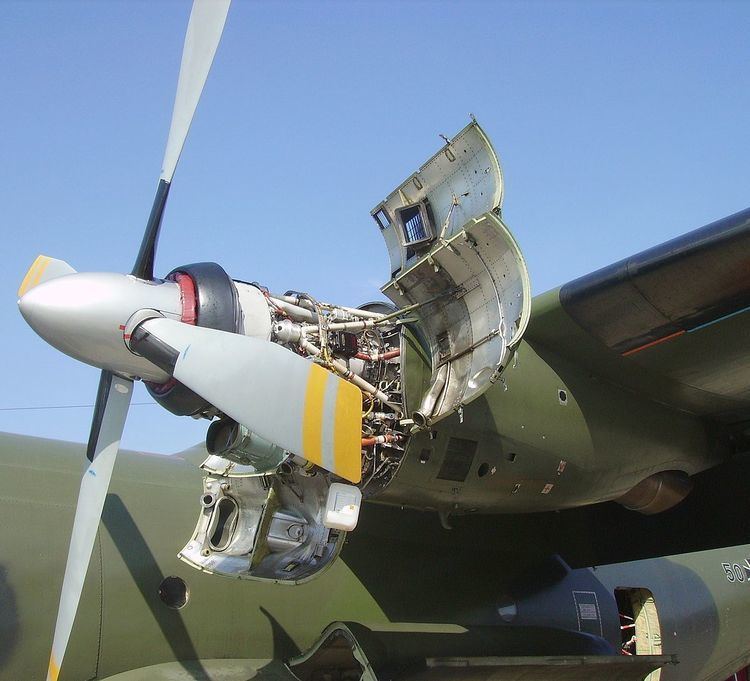 | ||
The Rolls-Royce RB.109 Tyne is a twin-shaft turboprop engine developed in the mid to late 1950s by Rolls-Royce Limited. It was first test flown during 1956 in the nose of a modified Avro Lincoln. Following company naming convention for gas turbine engines this turboprop design was named after the River Tyne.
Contents
Design and development
Designed in 1954 by a team under Lionel Haworth and intended as a more powerful alternative to the Dart, the RB.109 Tyne was initially designed for a power of 2,500 shp but when first run in April 1955 the engine far exceeded expectations and was soon being type-tested at 4,220 shp. The Tyne was developed primarily for the four-engined Vickers Vanguard airliner, the prototype first flying on 20 January 1959 equipped with four Tyne Mk.506 of 4,985 e.s.h.p. Production deliveries of the engine were made from mid-1959 onwards to power the 43 Vanguards delivered to British European Airways and Trans-Canada Airlines.
The engine was further developed with greater power and used in the later twin-engined Dassault-Breguet Atlantique long-range reconnaissance aircraft; also in the Canadair CL-44 and Transall C-160 transport aircraft.
A single stage HP turbine drives the nine-stage HP compressor. A three-stage LP turbine drives the six-stage LP compressor and, through a reduction gearbox, the propeller. The combustor is cannular..
The Mark 515 Tyne had a nominal takeoff power output of 5,730 hp (4,273 kW) equivalent power, flat rated to ISA+16.8C.
The Tyne was also produced under licence in Germany by MAN Turbo, and in France by Hispano-Suiza.
Variants
Aircraft
Ships
The marine version, the Rolls-Royce Tyne RM1A, RM1C and RM3C remained in service as the cruise gas turbines in Royal Navy Type 42 destroyers and Type 22 frigates until the retirement of the 4 Batch 3 Type 22 frigates (2011) and the last remaining Type 42 Destroyer (2013).
Engines on display
A Rolls-Royce Tyne is on public display at the Royal Air Force Museum Cosford.
Specifications (Tyne RTy.20 Mk 21)
Data from Jane's All the World's Aircraft 1962-63.
